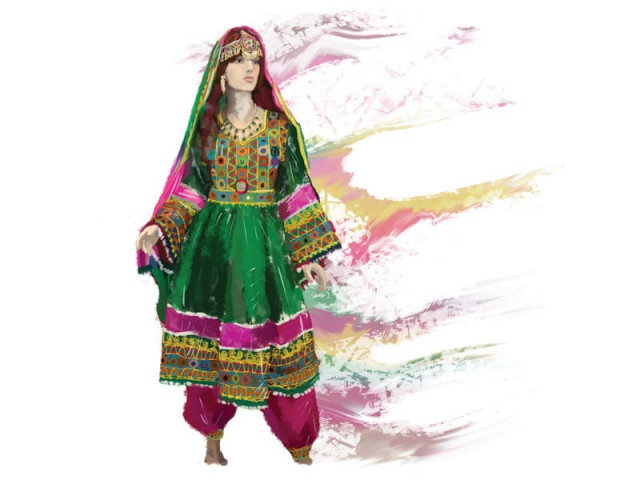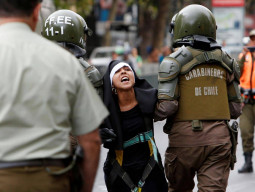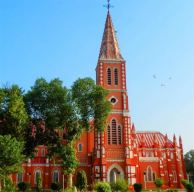
Even among the Pashtuns of what was then the North-West Frontier Province, the newcomers were looked at with disdain, and given the derogatory label of ‘Gilam Jam’, or carpet stealers. In later years, this term achieved notoriety as the label given to the murderous Uzbek militia of General Abdul Rashid Dostum, whose propensity for looting was such that many said that they took everything that wasn’t nailed down, even the carpets.
What many tend to overlook is the social and cultural contribution that the Afghan refugees made to Pakistan because, as they started pouring in, they brought with them their own customs, food and fashions, many of which have now taken root this side of the Durand line.
While the majority of refugees were Pashtuns, a small number of Persian speaking Kabulites also migrated to Pakistan. Smart, stylish and fashion conscious, they were often referred to as poor Europeans, as they settled in cities like Islamabad, Karachi, Peshawar and Quetta. A handful also emigrated to the Gulf States and Western countries.
Slowly and gradually, as the Afghan immigrants set up their own businesses in and around Peshawar, their foods and sense of fashion literally changed the flavour of the area.
Nowadays Kabuli Pulao and Afghan boutiques are common among the Peshawarites and the rest of the country.
Alongside the new business ventures, there were also those who simply transplanted the businesses which they had left behind in Afghanistan to their new abodes in Pakistan. Ahmed Wali is one such person. “My father once owned a big boutique in Shahray Nau, a posh market in the heart of Kabul,” he says, “but after the Russian invasion our family shifted to Peshawar and set up shop in 1983.” Ahmed now runs the popular Afghan boutique Sham-e-Uros in Peshawar, and according to him, business is booming. “The unique style of Afghan fashion attracts a lot of people, and now we have branches in Islamabad, Lahore and Karachi,” he says proudly.
Wedding season provides a huge boost to all Afghan boutiques in Peshawar as prospective brides are drawn towards the traditional Afghan wedding dress, called the Gandey Afghani. The dress, also called Khate Zunzeyree (a dress in chains) in the local dialect, consists of three main layers, the qameez (outer portion), the shameez (middle portion) and the mameez (inner portion). The qameez which is the most decorated of the three layers is usually adorned with colourful beads and miniature mirrors.
These detailed dresses require at least a month to complete; with as many as 20 to 25 artisans stitching and adorning the 6 to 15 metre cloth required for the complete outfit. Previously the dresses were exclusively stitched and designed by Afghan women but over time, young men were trained to stitch the fabric while the women focused solely on designing.
But the sheer intricacy of the dresses, and the level of work that each dress requires also makes them too expensive for most buyers in these economically troubled times. But where there’s a will, there’s a way, and these determined businessmen and women have no shortage of will. “A bridal dress costs anywhere between sixty to seventy thousand rupees and most people cannot afford to buy it,” Ahmed explains. “So we now offer these dresses for rent for 24-hours at rates ranging from six thousand to fifteen thousand rupees.”
Colours are a major feature of all Afghan outfits, with different colours and designs playing a vital role in the overall look of the completed outfit. The white Gandey Afghani is exclusively reserved for the wedding, while pink, purple, and red are worn at the Sherini Khuri (engagement) and blue and green are the preferred colours for the Nikah.
Apart from wedding dresses, Afghan boutiques have also experienced a boost in popularity due to the recent trend of sending Afghan dresses as gifts to relatives and friends abroad. These outfits are sent to the Gulf States, Germany, USA and UK where Pashtuns are living in large numbers. These dresses, inexpensive copies of the more expensive and intricate designs, are made in the rural areas of Peshawar, Nowshera and Charsadda. Prepared on demand, they are stitched in two to three days collectively by women, small children and skilled men. While the women do the Muraduzi (inlaying of colourful small beads), teenage boys and girls stitch Sheeshaduzi (miniature mirrors) and the men perform Silmaduzi (tapestry) on the dress. “The rates vary from five thousand rupees to seven thousand rupees depending on individual taste. We have also seen an increase in demand from cities like Lahore and Multan. In Karachi, white Gandey Afghanis are in great demand around December as Christian women prefer to wear them on Christmas Eve,” explains dress designer Noor Rahman.
This influence on fashion in Peshawar is one of the more benign aspects of the war next door, a gentle reminder that it is not just guns and drugs that our neighbours bring when they cross the Durand line.
Published in The Express Tribune, Sunday Magazine, January 22nd, 2012.
















COMMENTS
Comments are moderated and generally will be posted if they are on-topic and not abusive.
For more information, please see our Comments FAQ